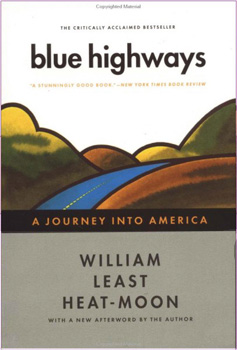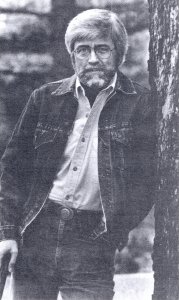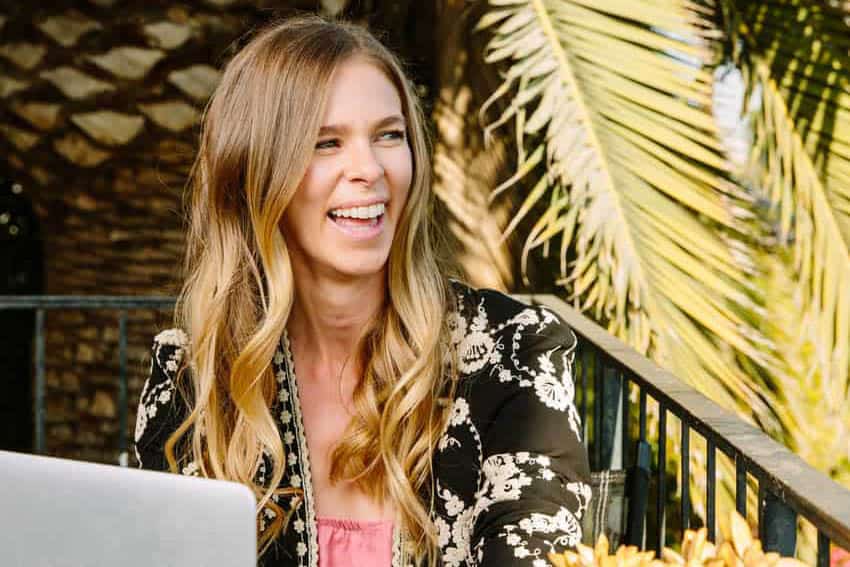William Least Heat-Moon’s classic story of travel across the Small Roads of America
Excerpted by Sarah Cavicchi
 After getting hit with the double whammy of losing his job and losing his wife to divorce, all on the same day in 1978, William Least Heat-Moon decided to pick up and drive along America’s Blue Highways.
After getting hit with the double whammy of losing his job and losing his wife to divorce, all on the same day in 1978, William Least Heat-Moon decided to pick up and drive along America’s Blue Highways.
This mid-life journey turned into Least Heat-Moon’s memoir Blue Highways: A Journey into America. With his unique and flowy writing style, Least Heat-Moon takes the reader along on a very interesting journey.
The 1982 Little, Brown & Company hardback edition was on the New York Times Bestseller List for 34 weeks. This 1999 Back Bay paperback edition includes photographs and a new afterword by the author.
As one reviewer put it, “The journey described took place back in 1978, and while certain descriptions and narratives are outdated, Heat-Moon was already lamenting the disintegration of America’s small-town charm by the fast-food/convenience subculture, which was just getting started at that time.
Little did he know how much worse it would get! This book, along with the works of Kerouac and Steinbeck, belongs with the great American road trip classics.”
Here are some selections from Blue Highways
The first highway: Interstate 70 eastbound out of Columbia, Missouri. The road here follows, more or less, the Booneslick Trail, the initial leg of the Oregon Trail: it also parallels both the southern latitude of the last great glacier in central Missouri as well as the northern boundary of the Osage Nation.
The Cherokee and I had skirmished its length in Missouri and Illinois for ten years, and memory made for hard-driving that first day of spring. But it was the fastest route east out of the homeland. When memory is too much, turn to the eye. So I watched particularities.
Item: green and grainy and corrupted ice over the ponds.
Item: blackbirds, passing like storm-borne leaves, sweeping just above the treetops, moving as if invisibility tethered to one will.
Item: barn roofs painted VISIT ROCK CITY – SEE SEVEN STATES. Seven at one fell swoop. People loved it.
Item: uprooted fencerows of Osage orange (so-called hedge apples although they are in the mulberry family). The Osage made bows and war clubs from the limbs; the trunks, with a natural fungicide, carried the first telegraph lines; and roots furnished dye to make doughboy uniforms olive drab. Now the Osage orange was going so bigger tractors could work longer rows.

At High Hill, two boys were flying gaudy butterfly kites that pulled hard against their leashes. No strings, no flight. A town of surprising flatness on a single main street of turn-of-the-century buildings paralleling the interstate, High Hill sat golden in a piece of sunlight that broke through. No one moved along the street, and things held so still and old, the town looked like a museum diorama.
Eighty miles out, the rain started popping the windshield, and the road became blobby headlights and green interstate signs for this exit, that exit. LAST EXIT TO ELSEWHERE.
I crossed the Missouri River not far upstream from where Lewis and Clark on another wet spring afternoon set out for Mr. Jefferson’s “terra incognita.” Then, to the southeast under a glowing skullcap of the fouled sky, lay St. Louis. I crossed the Mississippi as it carried forty hourly tons of topsoil to the Louisiana delta.
The tumult of St. Louis behind, the Illinois superwide quiet but for the rain, I turned south onto state 4, a shortcut to I-64. After that, the 42,500 miles of straight and wide could lead to hell for all I cared; I was going to stay on the three million miles of bent and narrow rural American two-lane, the roads to Podunk and Toonerville. Into the sticks, the boondocks, the burgs, the backwaters, jerkwaters, the wide-spot-in-the-road, the don’t-blink-or-you’ll-miss-it towns. Into those places where you say, “My god! What if you lived here!” The Middle of Nowhere.
Driving in the Rain
The early darkness came on. My headlamps cut only a forty-foot trail through the rain, and the dashboard lights cast a spectral glowing. Sheet lightning behind the horizon of the tress made the sky look like a great faded orange cloth being blown about; then darkness soaked up the light, and for a moment, I was blinder than before.
In the approaching car beams, raindrops spattering the road became little beacons. I bent over the wheel to steer along the divider strips. A frog, long-legged and green, belly-flopped across the road to the side where the puddles would be better. The land, still cold and wintery, was alive with creatures that trusted in the coming of spring.
On through Lebanon, a brick-street village where Charles Dickens spent a night in the Mermaid Inn; on down the Illinois roads – that leave you ill and annoyed, the joke went – all the way dodging chuckholes that Time magazine said Americans would spend 626 million dollars in extra fuel swerving around.
Then on to I-64, a new interstate that cuts across southern Illinois and Indiana without going through a single town. If a world lay out there, it was far from me. On and on. Behind, only a red wash of taillights.
At Grayville, Illinois, on the Wabash River, I pulled up for the night on North Street and parked in front of the old picture show. The marquee said TRAVELOGUE TODAY, or it would have if the O’s had been there. I should have gone to a cafe and struck up a conversation; instead, I stumbled to the bunk in the back of my rig, undressed, zipped into the sleeping bag, and watched things go dark. I fought desolation and wrestled memories of the Indian wars.
First night on the road. I’ve read that fawns have no scent so that predators cannot track them down. For me, I heard the past snuffling about somewhere close.
Buy this book from Amazon:
Blue Highways: A Journey Into America

Sarah Cavicchi is a graduate of the University of Massachusetts and an editorial assistant for GoNOMAD. She writes our daily Travel News Notes blog.
- GoNOMAD Reviews of New Travel Products - June 1, 2012
- Lake Lovers Have a Home at Lakelubbers.com - August 1, 2010
- Blue Highways: An American Road-Trip Classic - August 1, 2010


